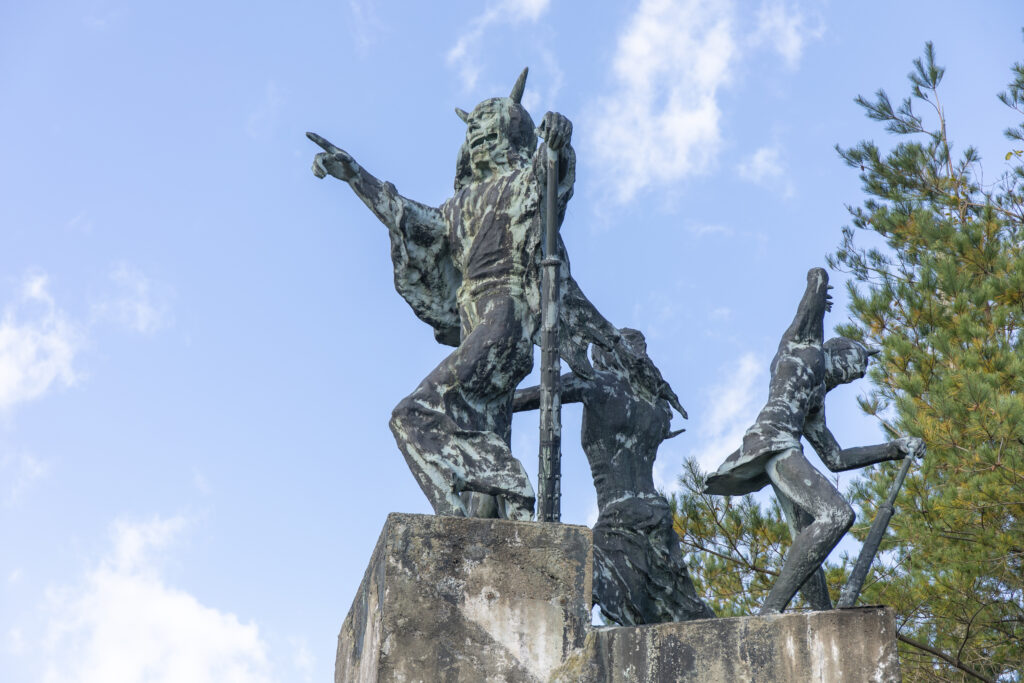Off to Oni Land!
Of course, the best way to get to know the oni of Oeyama is to go there, so we’ll introduce some spots where you can do just that.
◆Oeyama Onigawara Park
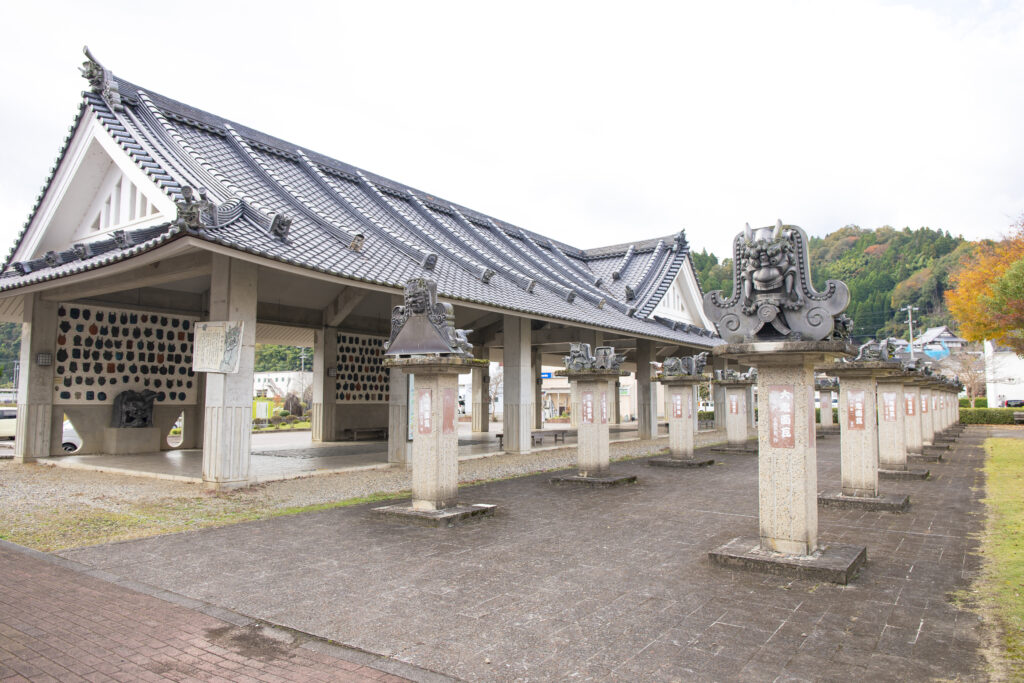

Our first stop is Oeyama Onigawara Park, which is located right in front of Oe Station on the Kyoto Tango Railway in Oe-cho, Fukuchiyama City, the heart of oni country. The park is devoted to onigawara, or roof tiles that depict oni faces. These tiles are usually found on roofs of castles, temples, and other types of traditional architecture, where their function is partly decorative and partly to ward off evil. The roof of the gallery in the park is an impressive sight, featuring 72 onigawara made by tile artisans from around Japan. The oni theme also extends to the fountain and signboards in the park.
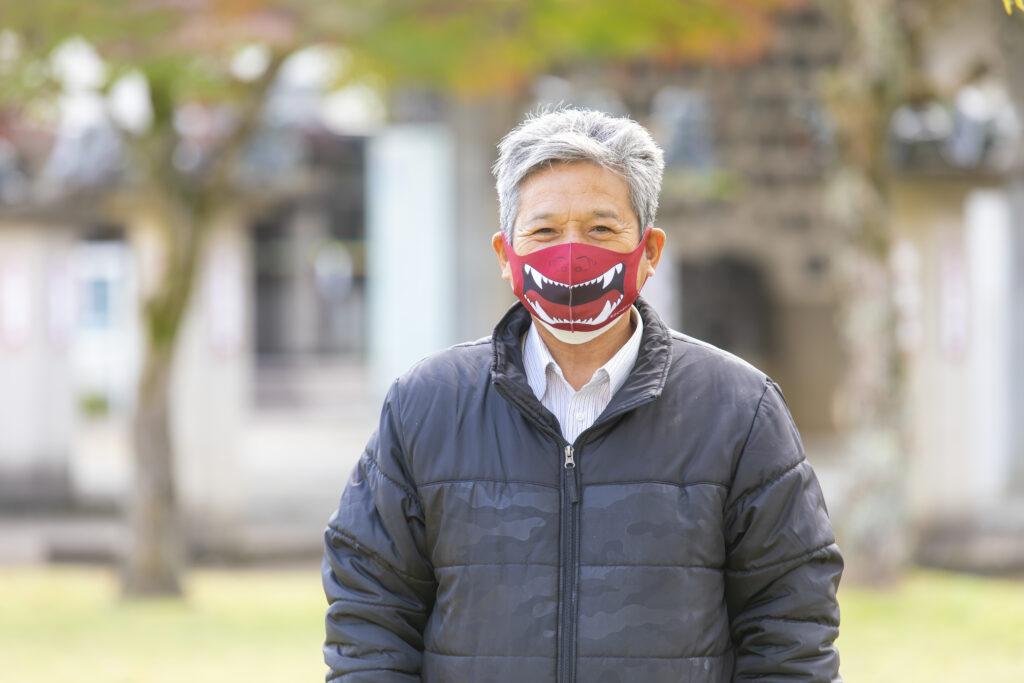

Don’t forget to drop by the station shop to pick up some oni-themed souvenirs. Choose from oni face masks, oni-shaped sweets, and more. The wrapping is also fun!
Access: The Hashidate Limited Express takes you directly from Kyoto to Oe in about 1 hour and 40 minutes (be sure to check the timetable as services are relatively infrequent). Alternatively, take the JR Sanin Line from Kyoto Station to Fukuchiyama Station, transfer to the Kyoto Tango Railway, and get off at Oe Station.
◆Japan Oni Cultural Museum
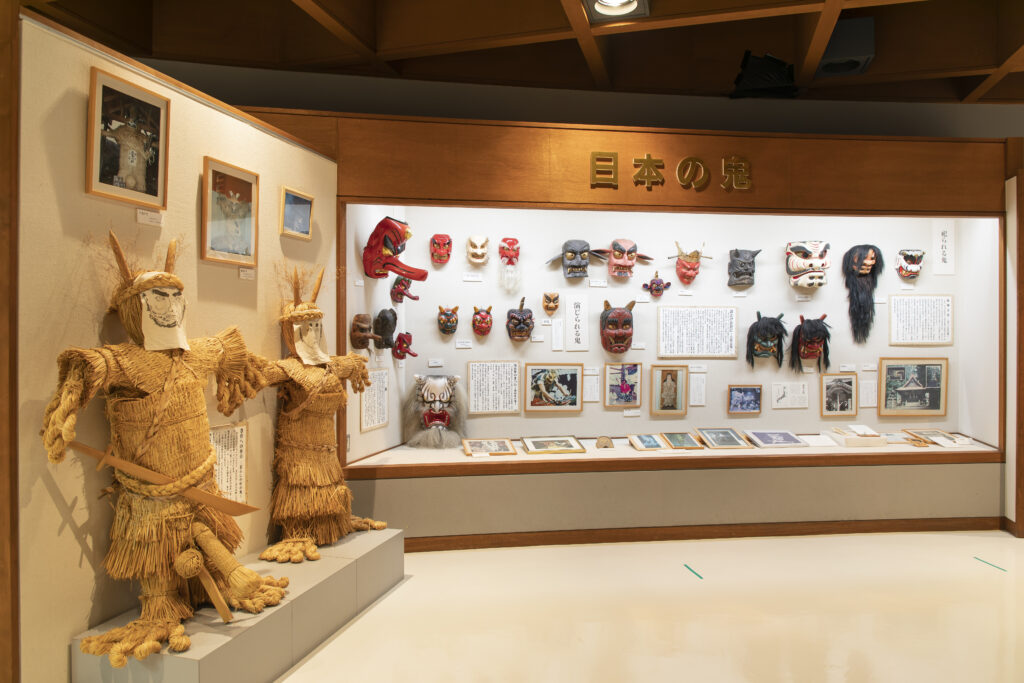
Japan Oni Cultural Museum in the Oeyama mountains is one of just a few museums in Japan dedicated to oni. The museum has exhibits on local folklore, oni culture and Japanese performing arts, as well as a collection of masks of devils, witches, and evil spirits from around the world. It’s fascinating to compare Japanese oni with their counterparts from other countries.

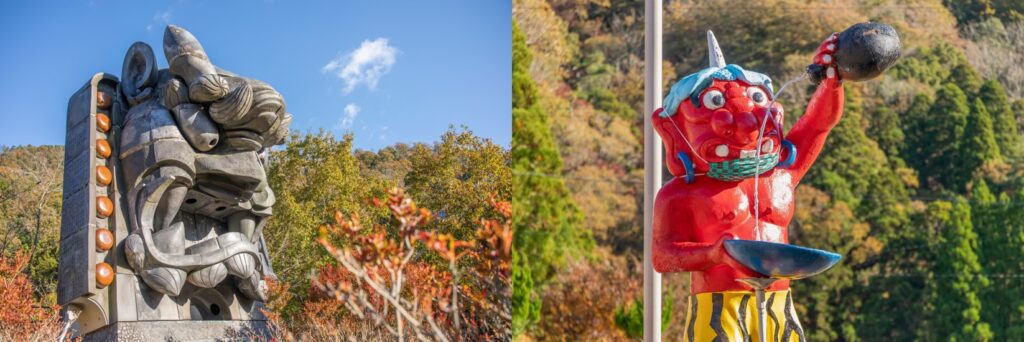
There are a number of statues in the museum grounds including a formidable 5-meter-high, 10-ton giant onigawara, and some more comical figures to remind us of the friendly side of these creatures.
Access: Take Fukuchiyama City Bus from Oe Station to Oeyama-no-ie bus stop (approx. 20 minutes). Note that the bus only operates on weekdays. Please take a taxi on weekends or holidays.
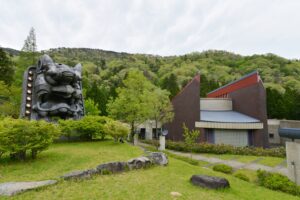
Japan Oni Cultural Museum
The Japan Oni Cultural Museum is appropriately located at the foot of the Oeyama mountain range, home to the most notorious “oni” (demon or ogre) in Japan, Shuten Doji. The museum explains local folkl …
◆Oni Monument
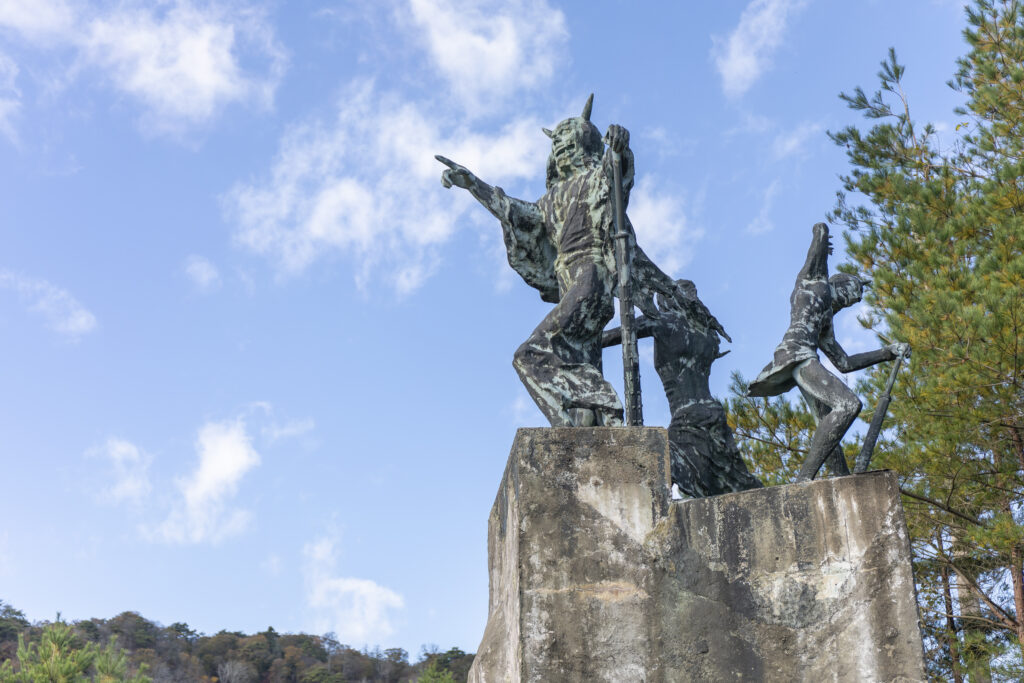
About twenty-minutes’ stroll from Japan Oni Cultural Museum, there’s a small hill with a monument to three oni—one of them is Shutendoji from the famous tale. It was designed by artist Toru Narita, creator of the Japanese superhero Ultraman. Three meters tall and sitting on a five-meter-high base, the demonic trio is highly photogenic against the background of the blue sky and green foliage. In case you’re wondering, Shutendoji’s finger is pointing towards Kyoto city.
◆Futasegawa Gorge
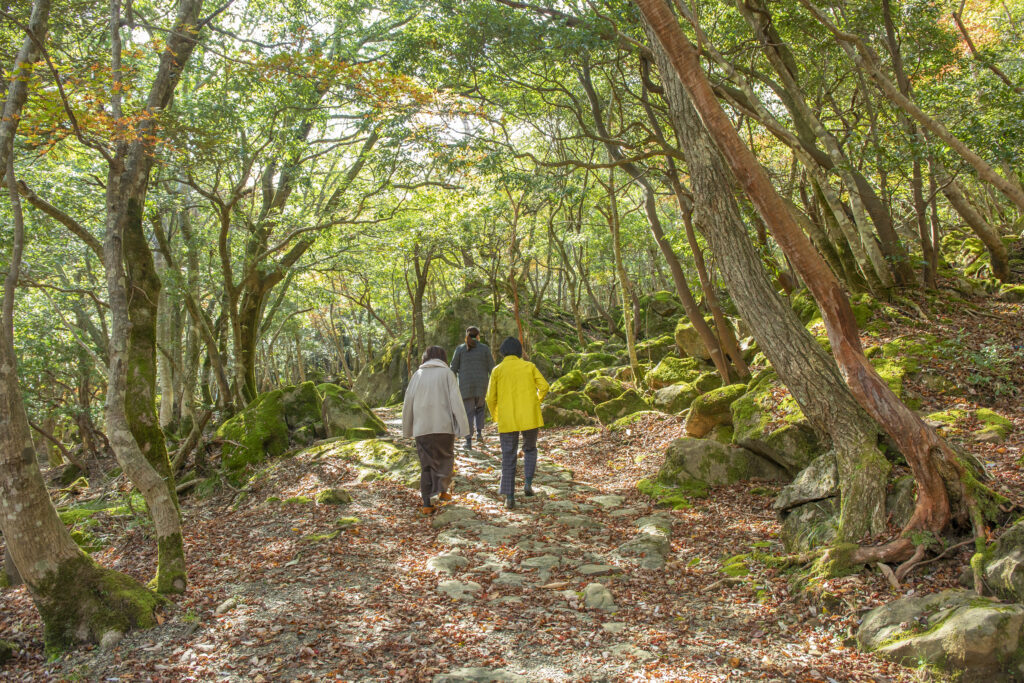
The Futasegawa Gorge at the foot of Mt. Oe is a must-see on any trip to Oeyama. Not just stunningly beautiful, the area is dotted with oni-related sites that can be explored via a walking path around the gorge. One circuit of the path takes about 30 to 40 minutes, and you’ll enjoy some soothing forest bathing along the way.
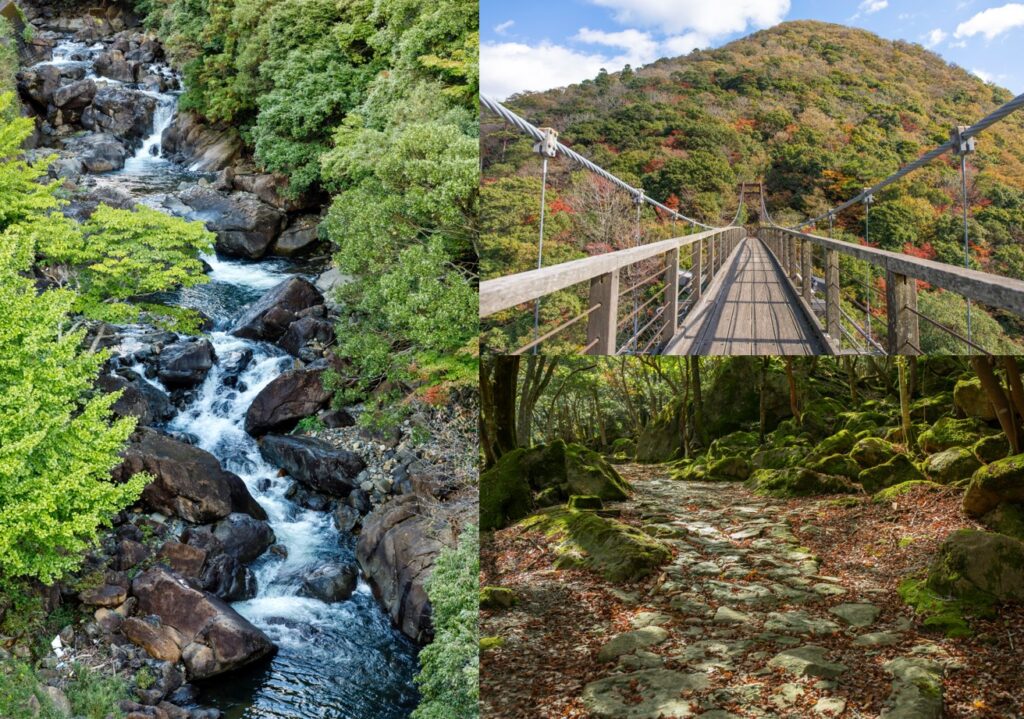
The highlight of the Futasegawa Gorge area is a giant suspension bridge called Shindoji Bridge. It affords spectacular views of the Oeyama mountain range, as well as the rushing Futasegawa Mountain Stream and unique rock formations below. The experience is made all the more thrilling by the swinging bridge!
On the right bank the path follows an old stone road that was part of an important highway connecting the seaside town of Miyazu in the north of Kyoto Prefecture with the capital of Edo (present-day Tokyo) during the Edo Period (1603-1867). It feels like an oni could jump out from behind one of the mossy rocks at any moment!
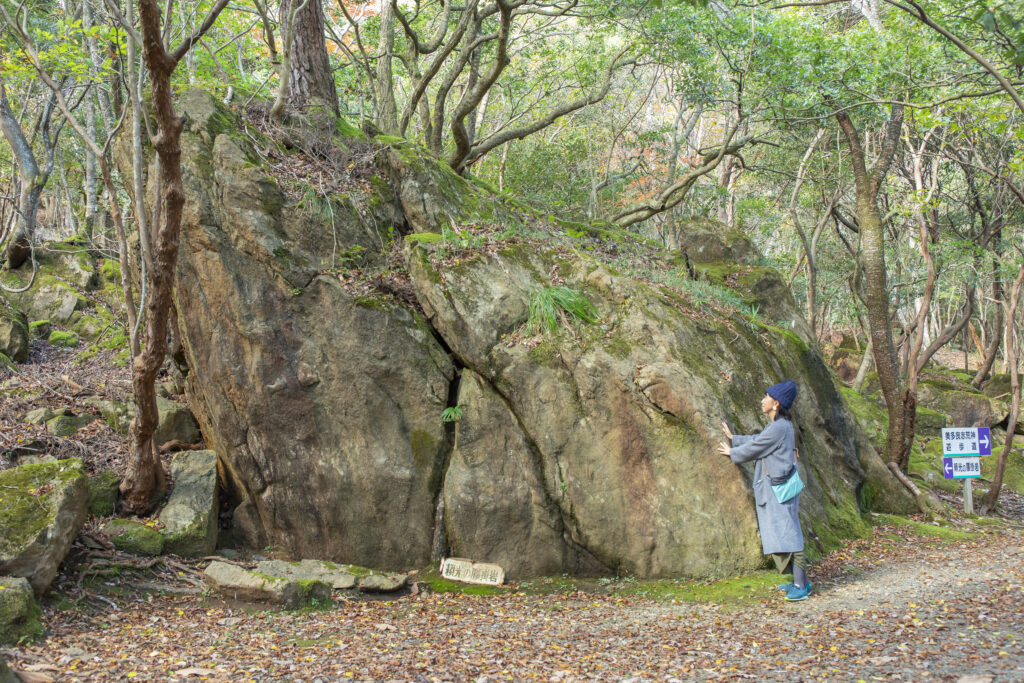
Near the bridge you’ll find Raiko no Koshikake Iwa, a giant rock on which Raiko, the leader of the posse that defeated Shutendoji, is said to have sat and rested. Why not pop yourself down here and hatch your own scheme to capture some pesky oni?
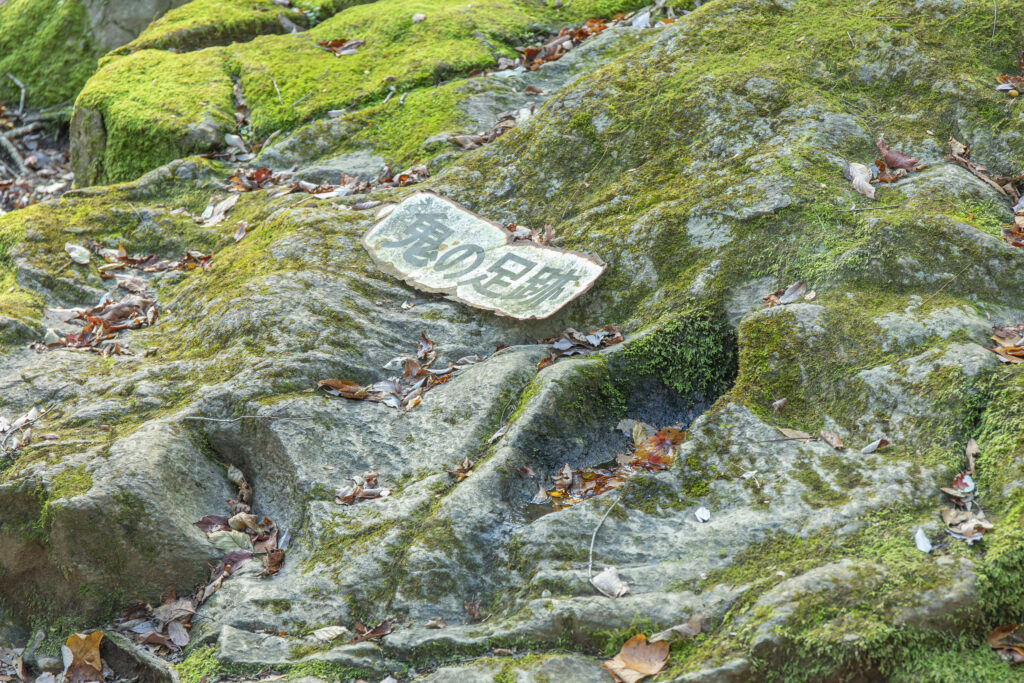
Look out for some “oni footprints” in a large rock just near Raiko’s seat. These indents are said to have been made when an oni leapt down onto the rock from the other side of the river.
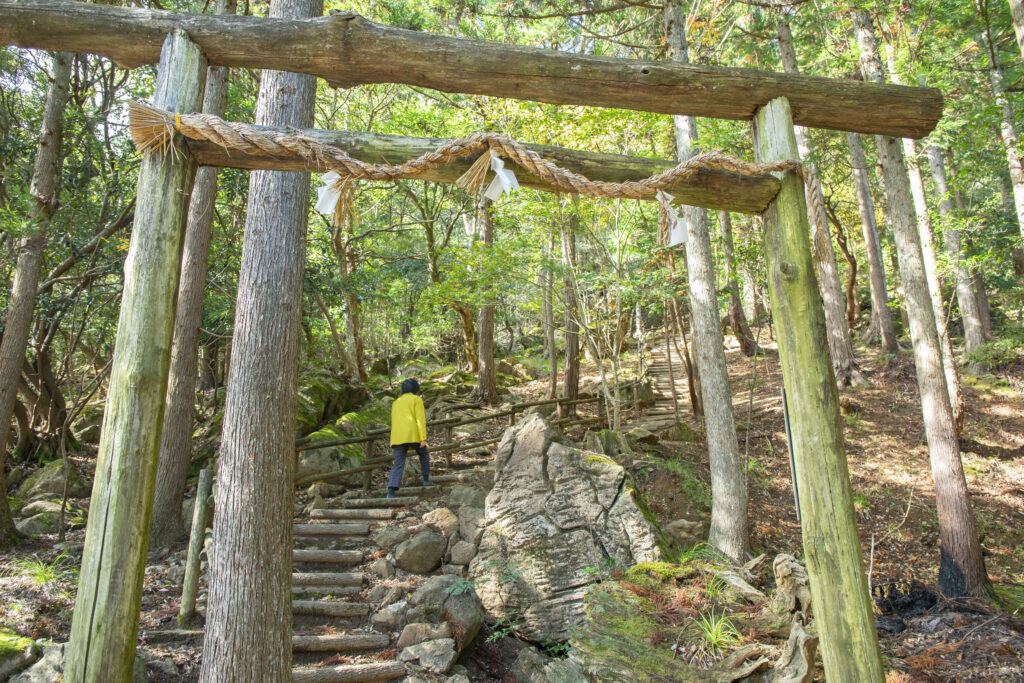
A little further along is a rustic, wooden torii gate and a set of stone steps leading up to a small riverside shrine called Mitarashi-kojin Shrine. The shrine is dedicated to a mirror worn by a white dog that saved the prince in the story of Prince Maroko (in traditional Japanese beliefs, mirrors are sacred and though to be inhabited by spirits). It’s very atmospheric here—you can really feel the energy of the mountains.
Access: Take Fukuchiyama City Bus from Oe Station to Futasegawa bus stop (the bus only operates on weekdays). Alternatively, it’s a one-hour hike from Oeyamaguchi-naiku Station.
◆Onitake Inari Shrine
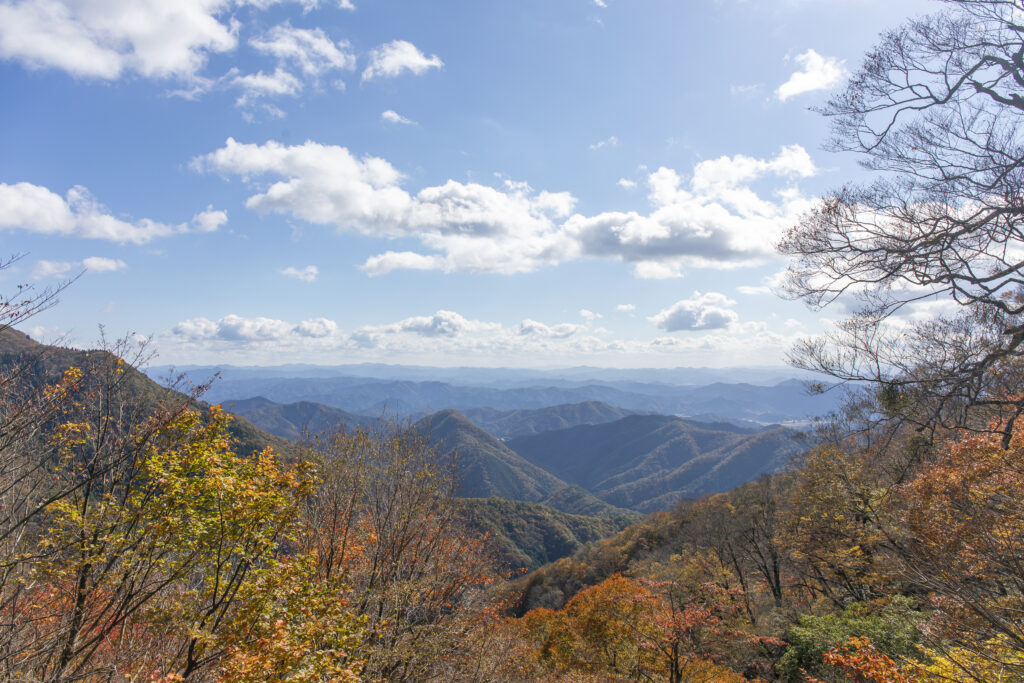
Another oni-related shrine in the area is Onitake Inari Shrine (this time “oni” is in the name!) located at the eighth station of the highest mountain in the range. Shrine records say it was built by the son of the demon-spider-slayer Hikoimasu-no-kimi to honor the achievements of his father. There’s a lookout point in front of the shrine with a breathtaking view of the mountains stretching out into the distance.
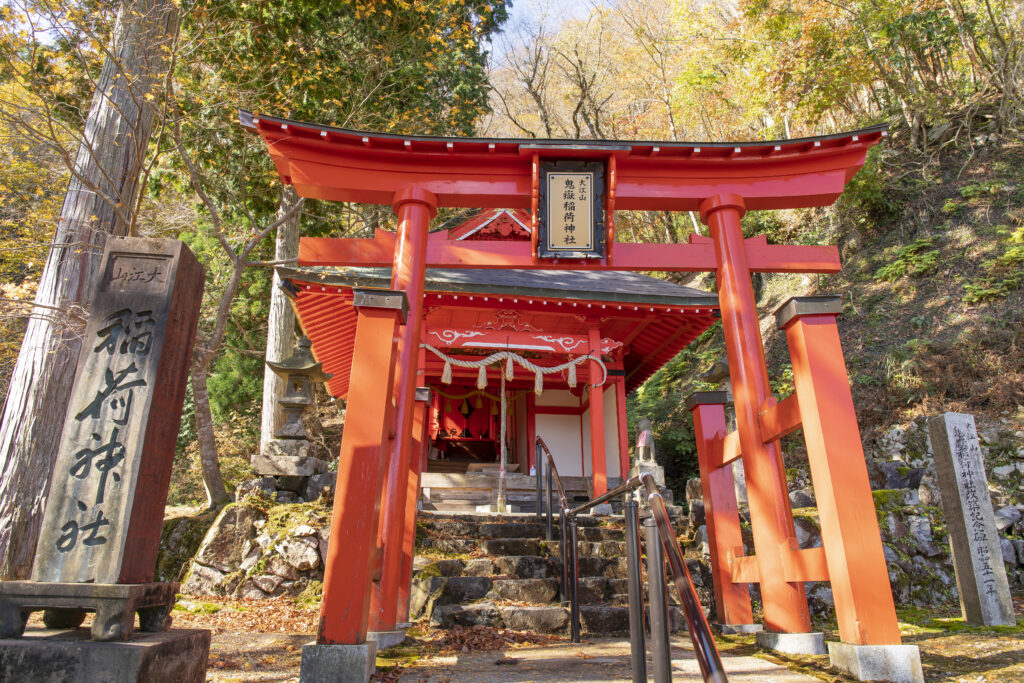
There is a paved road to Onitake Inari Shrine, so the best way to get there is by car (there is no bus service). Many visitors come here to watch the famous unkai or “sea of clouds”, a phenomenon that occurs in the early mornings of autumn and winter when layers of cloud and fog form below in a mystical sight that resembles a floating sea.
◆Lunch Time: Shokudo Oeyama
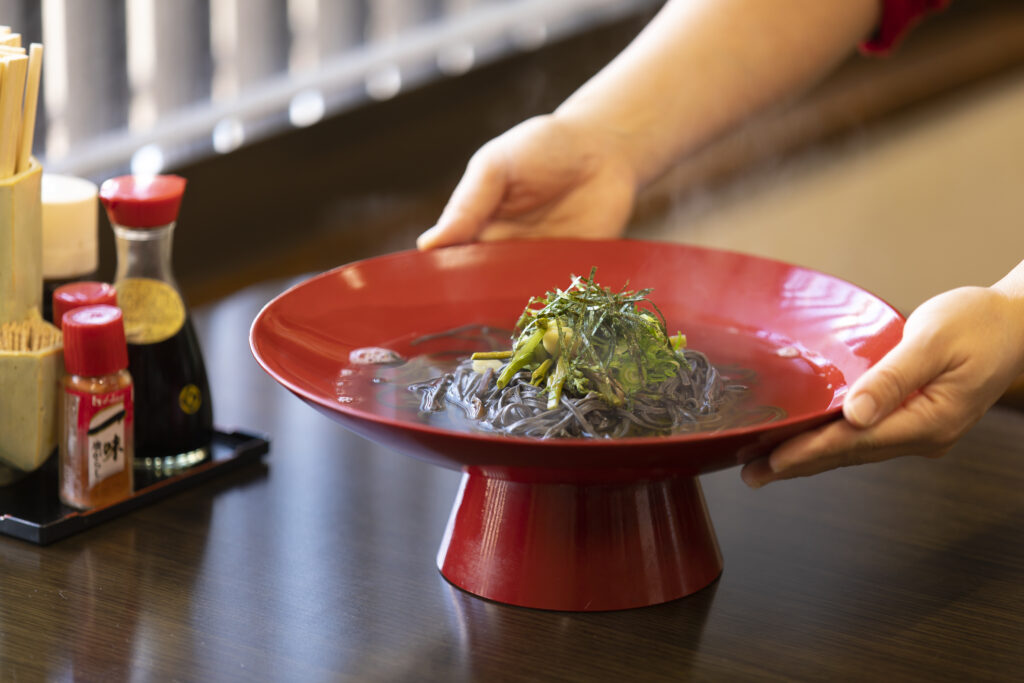
After a morning chasing oni, a great place to stop for a lunch break is Shokudo Oeyama. This family-run eatery is a favorite with locals and just a short walk from Oeyama Station. The specialty is “oni soba” noodles served in a wide-mouthed drinking cup called a sakazuki (you might have seen victorious sumo wrestlers drink from a giant one of these). Restaurant owner Ms. Miyaki explains that they’re like the drinking cup used by the sake-loving Shutendoji. The visual impact of the black soba against the red dish is fantastic!
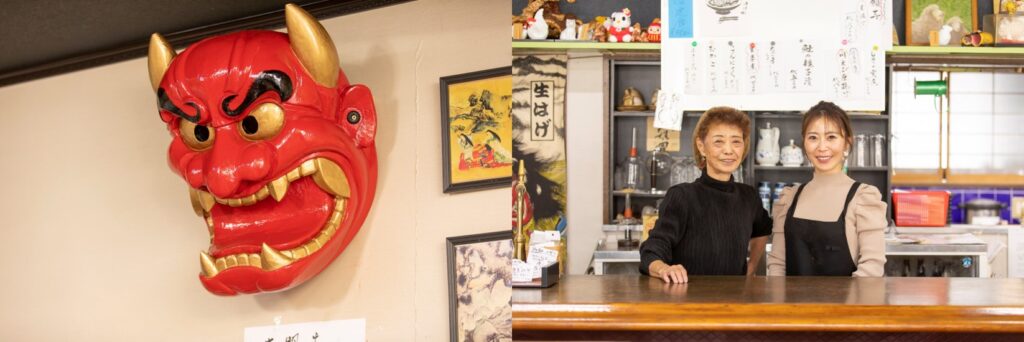
The noodles are unusually dark in color because they are made from whole buckwheat, which means they’re also more nutritious than regular soba. The broth is light and clear, so you can gulp it down like a demon!
Business Hours: 11:00 am — 4:00 pm
Closed on Monday
Access: An eight-minute walk from Oe Station
◆Souvenir Shopping: Kappo Sato Doburoku Rice Wine
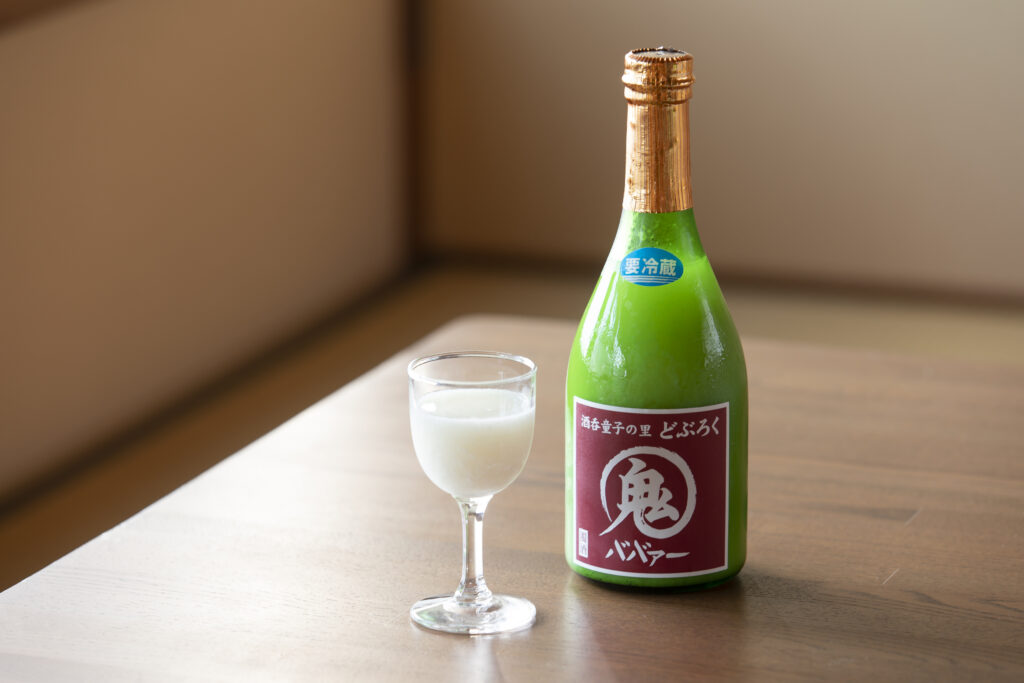
While you’re in Oeyama, don’t miss the chance to buy a bottle of the local specialty rice wine called doburoku. It’s a traditional rustic homebrewed sake that is thought to be the precursor of the clear sake we know today. The Kehara district of Oe-cho, famous for picturesque terraced rice fields, is home to a handful of microbreweries that are garnering attention for doburoku they make from rice they grow themselves.
One of Kehara’s finest varieties of doburoku is Onibaba (“oni hag”) produced by Noriko Sato, who runs local Japanese restaurant Kappo Sato with her husband. Ms. Sato’s brew is a three-time winner of the National Doburoku Contest.
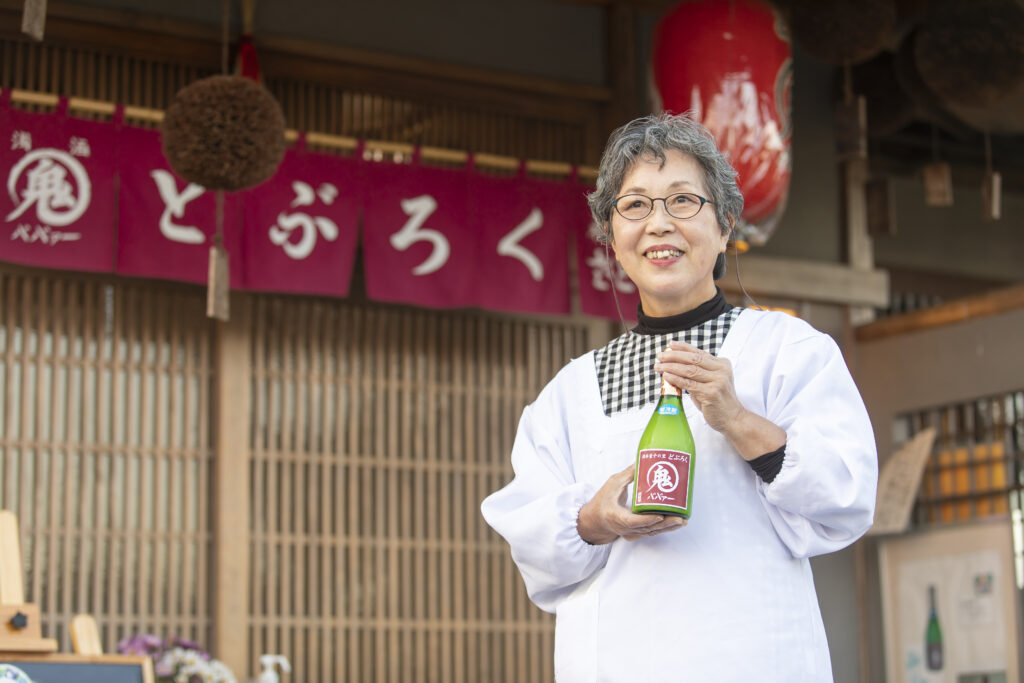
In contrast to regular sake, which is made by filtering out the rice after fermentation to obtain the clear color, doburoku is unfiltered and thus retains its cloudiness, meaning you taste the distinct umami and sweetness of the rice directly. Onibaba is acclaimed for its splendid aroma and depth. Ms. Sato does not sell her product wholesale as she prefers to interact personally with customers, so this is the only place you can try the Onibaba taste. Sounds like a devilishly good reason to include a trip to Oeyama in your itinerary!
Business Hours: 11:00 am — 6:00 pm
Closed: irregularly
Access: A six-minute walk from Oe Station
